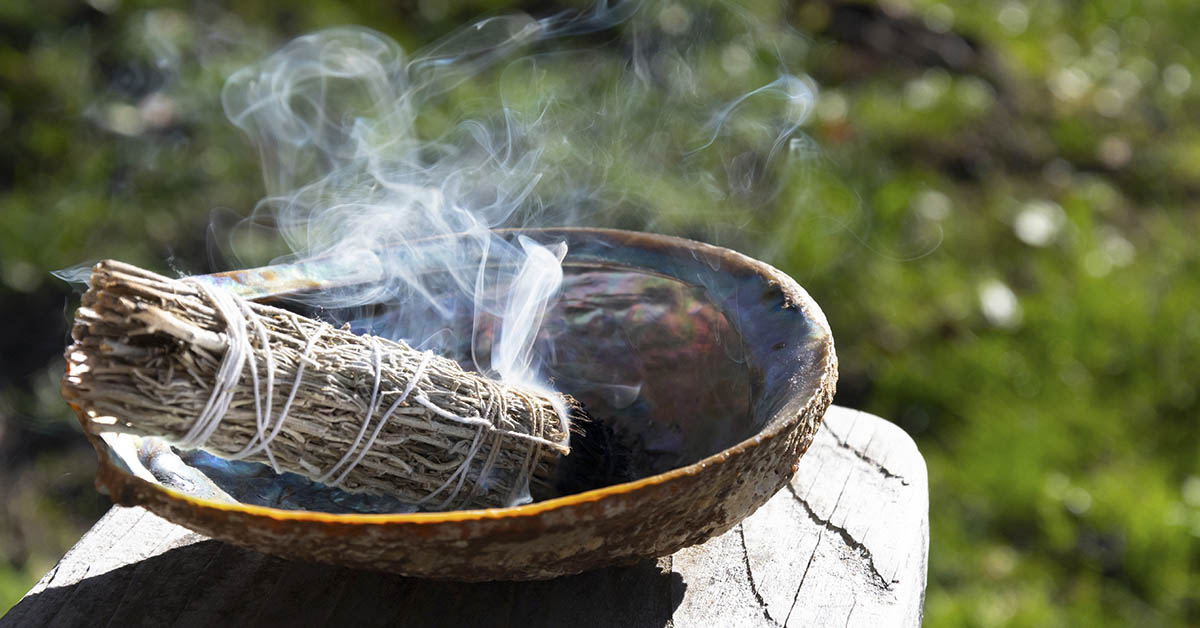For thousands of years, indigenous civilizations have burned sage to heal bodies, cleanse spaces and remove negative energy. Indigenous tribes like the Lakota, Chumash, and Cahuilla have practiced smudging rituals in North America for millenia. These practices were meant to purify the air, safeguard their communities, and connect ceremonies to ancestral wisdom. Tribes used white sage (Salvia apiana) for its antimicrobial properties and spiritual resonance.
Ancient Greeks, Romans, and Egyptians also burned herbs for health and ritualistic purposes. However, smudging remains distinct from broader “cleansing” rituals. It carries deep cultural significance for specific Native American groups. However, in our current day and age, practitioners recommend smudging for relaxation and combating the ills of everyday, modern life.
With research still ongoing on whether there is validity to sage’s ability to purify the air, one study claims burning sage kills airborne bacteria. While these claims sound promising, ethical debates persist about commodifying sacred traditions. This article explores smudging’s roots, mechanisms, and benefits while honoring its origins. From stress relief to microbial defense, we’ll uncover why this ancient practice is still performed today.
What is Sage?
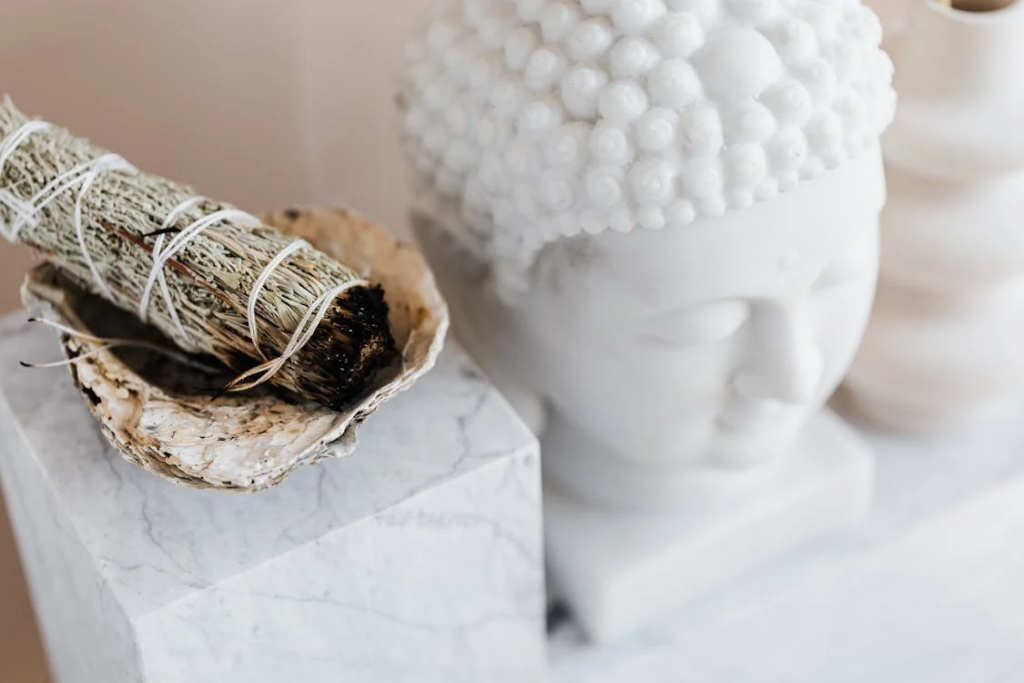
Sage is a hardy, aromatic herb native to the Mediterranean. Its name derives from the Latin salvare, meaning “to heal.” This versatile plant boasts over 900 species, including common garden sage (Salvia officinalis) and white sage (Salvia apiana), frequently used in smudging rituals. Sage belongs to the mint family, alongside rosemary and thyme.
Ancient Egyptians used sage to boost fertility. Greeks treated ulcers with it. Romans revered it as a sacred herb. Today, it flavors Thanksgiving stuffing and fuels scientific curiosity. Its velvety gray-green leaves pack antioxidants like rosmarinic acid. Modern studies suggest it may enhance memory and combat inflammation. Traditional applications span pain relief to infection control. Yet more research needs to be conducted to fully verify these medical claims.
White sage’s earthy aroma dominates spiritual practices. Common sage is usually found in kitchens and enjoyed as herbal tea. Both varieties contain antimicrobial compounds, making it a favorite amongst traditional and modern wellness practices.
Read More: 8 Healthy Reasons to Add Cardamom to Your Diet
Sage in Healing

According to recent studies, sage has been shown to possess powerful antioxidant and anti-inflammatory properties. It’s been studied for many health issues such as depression, obesity, lupus, cardiovascular disease, and dementia. However, studies have yielded mixed results. Early trials suggest sage’s rosmarinic acid combats free radicals, which cause chronic diseases. This could slow aging processes and boost immunity. However, scientists caution that human trials are still limited.
What is Smudging?
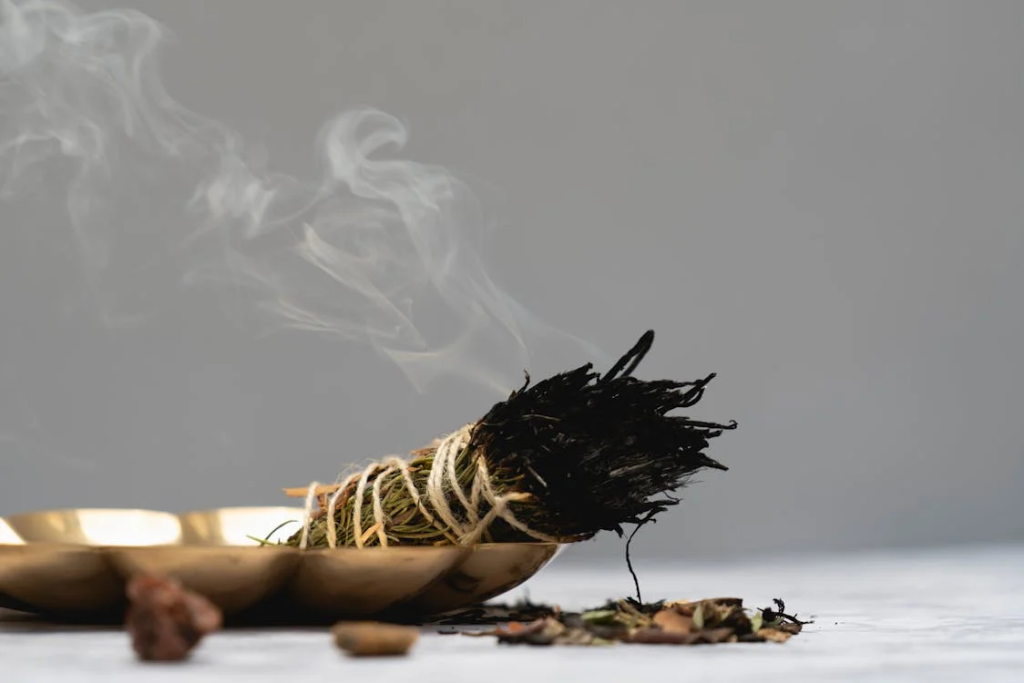
Native tribes like the Lakota and Chumash developed smudging as a sacred purification rite. Each group uses unique terms for the practice, distinct from the English label “smudging.” While cultures globally burn herbs ceremonially, smudging specifically ties to Indigenous cosmology and healing systems.
Practitioners light dried sage bundles, or smudge sticks, until they smolder. Smoke is guided with hands or feathers over bodies or rooms. Ethnobotanist Dr. Rosalyn LaPier notes it involves “washing” oneself with smoke, starting at the head. Shells often hold burning herbs, symbolizing water’s role in fire containment. White sage is coveted for smudging for its antimicrobial properties and earthy scent. Cedar, sweetgrass, or lavender may be bundled with sage, accompanying it.
Read More: 14 Essential Oils for Arthritis Relief
Modern Context and Ethical Considerations

Fears that the lack of understanding of smudging’s sacred roots beyond social media trends will lead to cultural appropriation. As people jump on the wellness trend bandwagon, overharvesting white sage could potentially threaten ecosystems and Indigenous access. Honor traditions by sourcing ethically and understanding smudging’s sacred roots beyond “trendy cleansing.”
Smudging Science
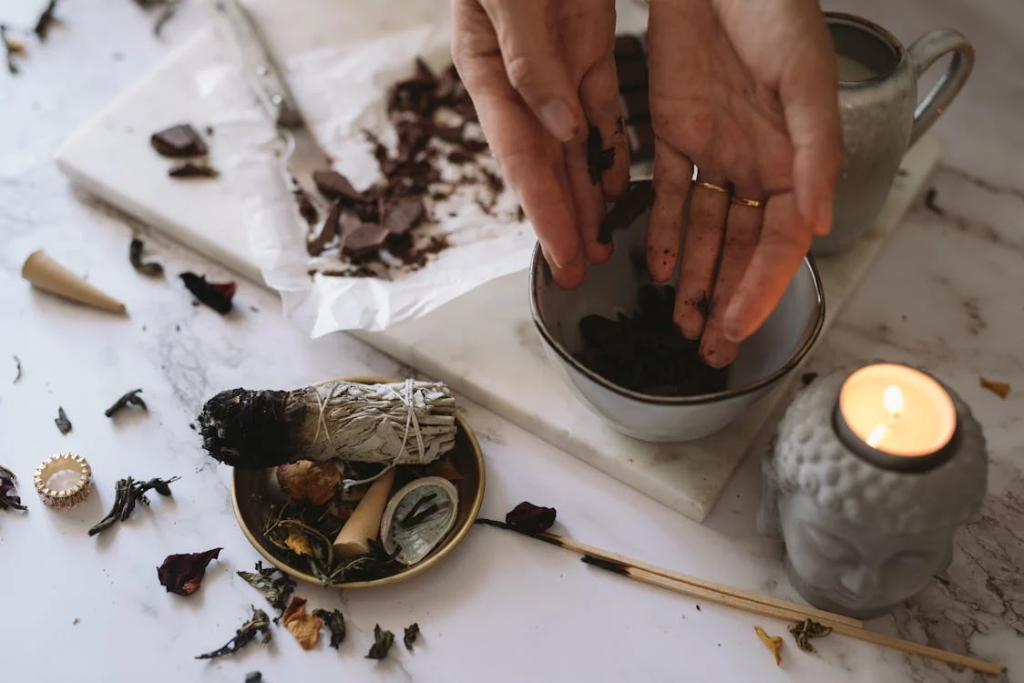
A 2007 study published in the Journal of Ethnopharmacology tested smoke from burning medicinal herbs, including sage, in controlled environments. The study, led by Dr. Narendra Singh and his team, looked at whether burning traditional medicinal herbs yielded antimicrobial potential.
Researchers burned a blend of herbs and mango wood (havan sámagri) in a closed room for 1 hour. Airborne bacteria counts dropped by 94% within an hour, with effects lasting 24 hours. Pathogens like Staphylococcus lentus and Corynebacterium urealyticum remained absent for 30 days in open-air follow-ups.
Active Compounds in Sage Smoke

Sage releases terpenes like 1,8-cineole, camphor, and thujone into the air when burned. These terpenes may interact with and disrupt bacterial cell membranes, neutralizing the bacteria. Camphor, another component, shows antiviral properties that may help in removing harmful pathogens from the air.
Read More: Healing Leaves: 10 Leaves With Powerful Medicinal Value
Holistic Advantages Beyond Air Purification

Some studies reveal that sage may reduce anxiety and stress by activating GABA receptors in the brain. Aromatherapy effects are linked to improved focus and temporary mood elevation. Sage smoke may help reduce dust and mold spores in the air, making it beneficial for those with allergies. It also acts as a natural insect repellant. Through cultural traditions and intentional practice, sage smoke can enhance mindfulness.
Limitations and Critique
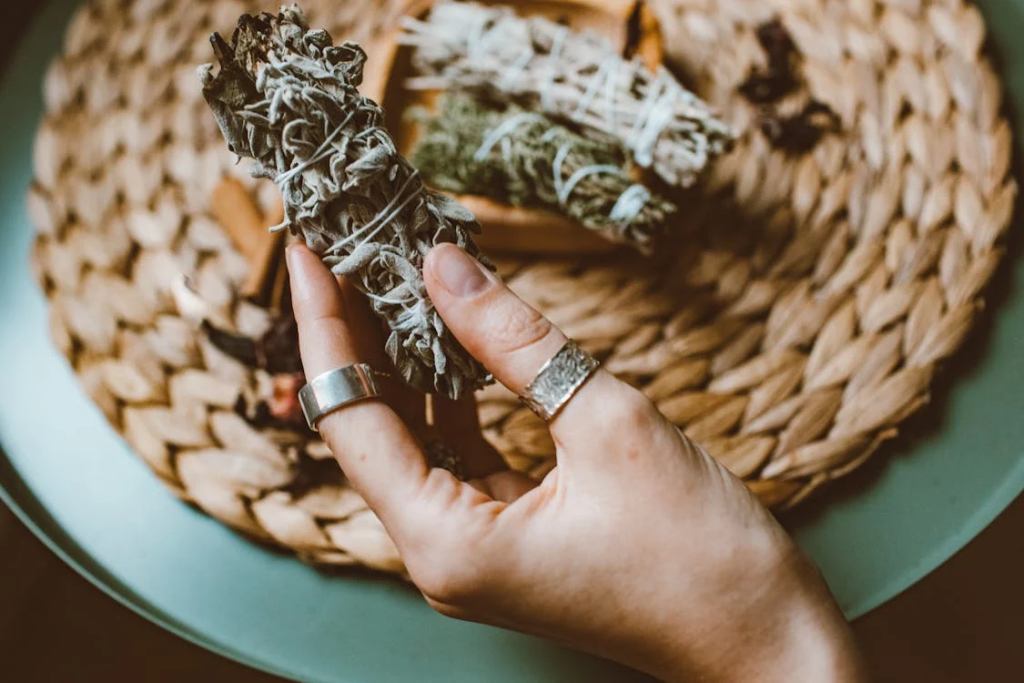
The 2007 study linking smudging to eliminating bacteria did not test sage. Researchers used havan sámagri, a Hindu ritual blend, which does not contain sage. Comparisons relied on a single mango-wood control sample, not repeated trials. Sealed-room conditions ignored real-world ventilation, skewing results.
Burning any plant material releases particulate matter. Smudging produces 4.5x more PM2.5 than cigarettes, per air quality studies. These particles worsen asthma and heart issues, per EPA warnings.
Read More: The Health Benefits of Mint and How to Use It Every Day
Evidence Gaps
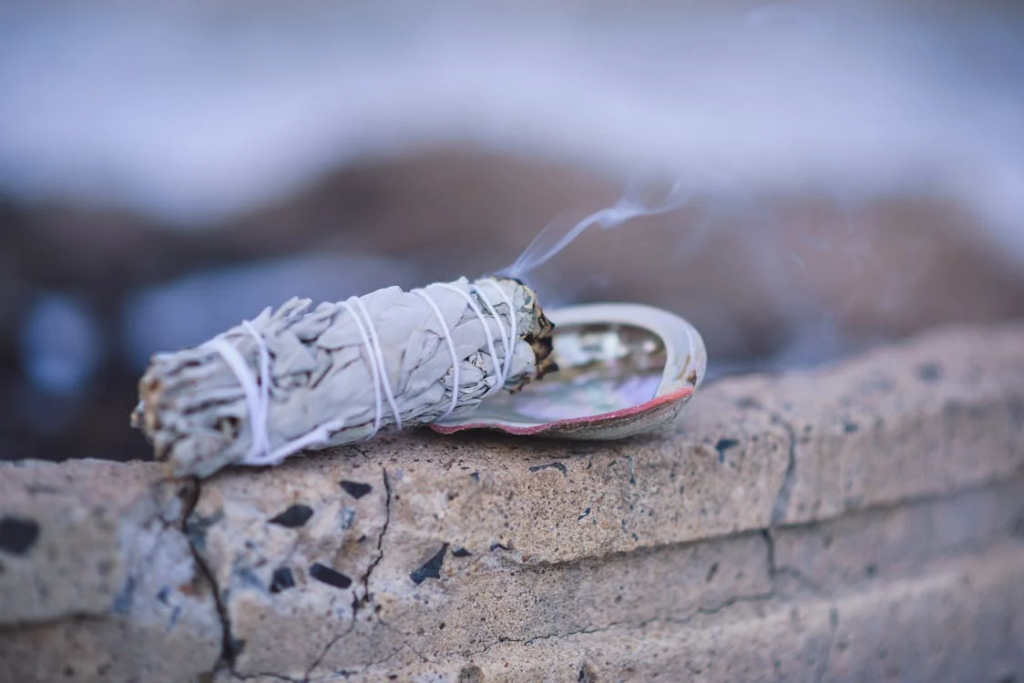
No follow-up studies confirm sage’s standalone antimicrobial effects. The NIH states sage lacks proven medical benefits for any condition. Cultural appropriation concerns persist, as non-Native adopters often overlook smudging’s sacred roots. Smoke rituals may temporarily alter air composition, but risks and oversold claims demand caution.
Conclusion
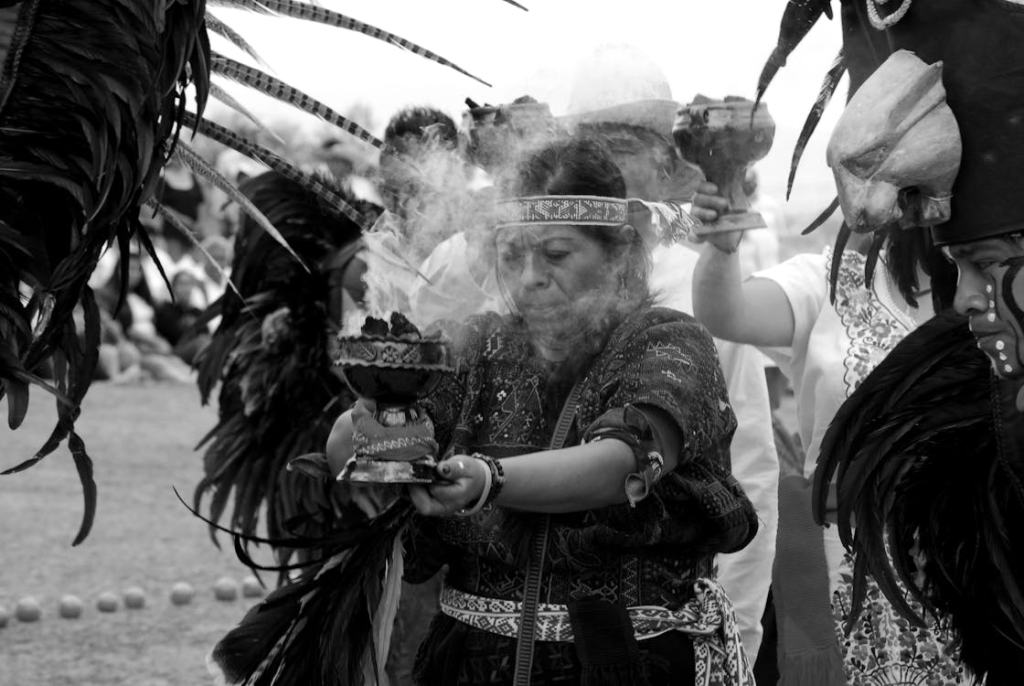
Smudging, rooted in Indigenous traditions like the Lakota and Chumash, symbolizes resilience, blending spiritual cleansing with communal well-being. While modern uses seek stress relief, its sacred origins demand respect.
Preliminary studies suggest antimicrobial benefits, but overharvesting and commercialization threaten ecosystems and cultural access. Honoring smudging requires ethical practices, education, and preserving its integrity beyond trends, respecting ancestral legacies.
Also, trusting valid information from legitimate professionals, such as doctors is important in the face of wellness trends. Always consult a healthcare professional before attempting any alternative treatments.
Read More: The Ultimate Guide to Cloves: Benefits, Uses, and How They Work
